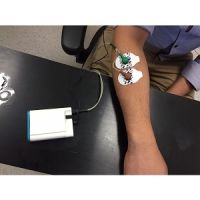According to latest results published in the Journal of the American College of Cardiology, only 43 percent of patients fully adhered to their guideline-indicated treatment regimes two years after an MI while only 34 percent of patients with atherosclerosis were fully adherent following two years.
The study was led by Sameer Bansilal, MD, MS, of the Icahn School of Medicine in New York, and colleagues. They mentioned that 83.6 million people in the U.S. have atherosclerotic disease, while approximately 735,000 have an MI each year and 210,000 have a recurrent MI.
For this analysis, the researchers evaluated 2010 to 2013 medical and
pharmaceutical claims from Aetna’s commercial and Medicare Advantage
population databases. They identified 4,015 patients who had an MI and
12,976 patients with atherosclerosis.
The post-MI group included adults who began taking statins and ACE inhibitors after hospital discharge and who had continuous medical and prescription drug benefits from Aetna during the six months before and after the MI.
The atherosclerosis group included adults who began taking statins
and ACE inhibitors and had two coronary, cerebrovascular or peripheral
artery ICD codes. They also were required to have continuous eligibility
for Aetna’s medical and prescription drug benefits from Jan. 1, 2010,
to Dec. 31, 2011.
All patients were required to have filled at least one prescription following hospital discharge.
The researchers estimated medication adherence by calculating the
proportion of days covered (PDC) for statins and ACE inhibitors.
Patients were considered to be fully adherent if they had a PDC of 80
percent of higher, partially adherent if they had a PDC of 40 percent to
79 percent and nonadherent if they had a PDC of less than 40 percent.
In the post-MI group, 26 percent of patients were nonadherent, 31
percent were partially adherent and 43 percent were fully adherent. In
the atherosclerosis cohort, 28 percent of patients were nonadherent, 38
percent were partially adherent and 34 percent were fully adherent.
For the post-MI patients, the rates of major adverse cardiovascular
events at two years were 18.9 percent in the fully adherent group, 24.7
percent in the partially adherent group and 26.3 percent in the
nonadherent group. For the atherosclerosis patients, the rates at two
years were 8.42 percent, 12.18 percent and 17.17 percent, respectively.
The researchers defined major adverse cardiovascular events as
all-cause mortality or hospitalization for nonfatal MI, stroke or
coronary revascularization.
In the post-MI cohort, the fully adherent group had a $369
per-patient reduction in per-patient annual direct medical costs
compared with the partially adherent group and a $440 reduction compared
with the nonadherent group. For the atherosclerosis patients, the fully
adherent group had a $371 per-patient reduction in per-patient annual
direct medical costs compared with the partially adherent group and a
$907 reduction compared with the nonadherent group.
By relying on claims data, the researchers said they could have
underestimated adherence if patients paid out-of-pocket for their
medications. They also could have overestimated adherence because claims
data do not confirm if patients are taking the medications as
prescribed. They added that claims data does not reliably measure
over-the-counter aspirin or clinical outcomes, including cause of death.
“Better medication adherence may be associated with a reduction in
major [cardiovascular] events and cost savings,” the researchers wrote.
“Strategies that improve medication adherence should be evaluated in
randomized trials to assess their true impact on [cardiovascular]
outcomes.”
Source: Journal of the American College of Cardiology
Image Credit: TheBlueDiamondGallery



























